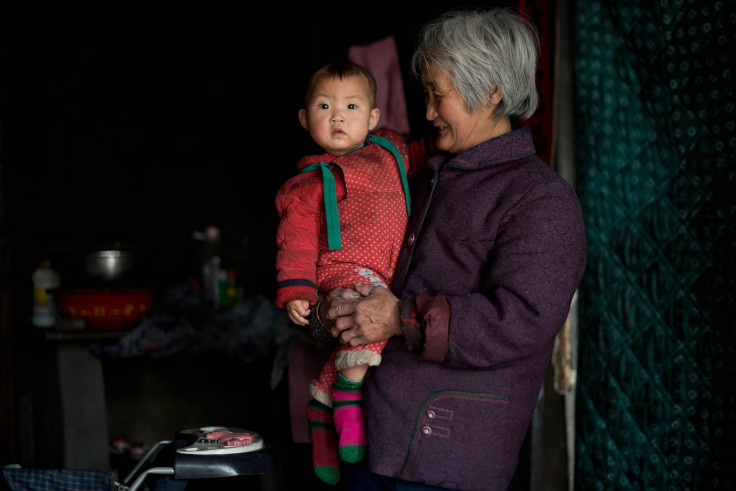China's One-Child Policy Change Will Take Decades To Relieve Economic Pressures Of Aging Population, Experts Say

China’s population is aging rapidly and the extra gray hairs have put immense stress on the world’s second-largest economy in the past three decades. In a bid to ease the economic strains and looming labor shortages from a graying population, the Chinese government ended its controversial “one-child policy” Thursday and announced it would allow all couples to have two children.
But abandoning the 36-year-old law is no quick-fix for China’s economic woes and it was not immediately clear Thursday whether the new policy would take effect immediately. While experts hailed the change, they warned it will take decades to relieve the demographic crisis. The policy shift also is a sign China’s current regime is starting to worry about its long-term economic trajectory amid a global fear the country’s thriving economy is hitting the brakes.
“It’s a little too late, but it’s better now than later,” said Yanzhong Huang, senior fellow for global health at Council on Foreign Relations, a New York City think tank. “If the policy is put in place immediately, it will only take effect 20 years from now, in terms of relieving the high-level of aging.”
The Chinese government implemented the family planning policy in 1979, requiring couples from China’s ethnic Han majority to have only one child. Ethnic minorities and some rural populations were largely exempt from the rule. The draconian law was eased slightly two years ago to allow more couples meeting certain criteria to have a second child. But the population control policy remained largely unchanged for 36 years.
Around the time the law was introduced, only 5 percent of China’s total population was at least 65 years of age. Today, at least 123 million people, or 9 percent of the population, are over this age. A 2010 report released by a government think tank said China will become the world’s most aged society in 2030. And by 2050, senior citizens will make up more than 30 percent of China’s total population.
Meanwhile, the birth rate has almost halved in the past 20 years and the labor pool has shrunk. China’s working age population -- those 16 to 59 -- fell 3.71 million last year, marking the third-straight annual decline in the labor force, the National Bureau of Statistics announced in January.
China’s top think tanks studied years of demographic data on the current fertility rate and recently released a report advising the government to “immediately drop” the one-child policy and implement a “two-child policy.” The advisers, which included the CASS Institute of Population and Labor Economy, the Population and Development Research Center of Renmin University of China and the China Population Development Research Center, expressed concerns regarding the nation’s low birth rate, employment profile and aging population, according to First Financial Daily, a Shanghai newspaper.
China’s National Bureau of Statistics in September revised 2014 gross domestic product growth to 7.3 percent from a previously reported 7.4 percent, marking the lowest growth rate since 1990. The revision came on the heels of a tumultuous summer for the country's stock market and global economies. The benchmark Shanghai Composite Index hit its peak on June 12 and proceeded to plunge nearly 40 percent. The Chinese government reportedly spent at least $236 billion to bolster its stock market, but the fall triggered a global sell-off among panicked investors in Asia, Europe, the U.S. and Africa.
China's aging population has been linked to the slowdown because it has led to a drop in productive labor and, in turn, an increase in the average wage level, making China less competitive to other labor intensive industries. Both India and Indonesia, which still enjoy significant demographic dividends, will surpass China in economic growth after 2020, a report by the Organization for Economic Cooperation and Development predicted.
Even if China’s new two-child policy is immediately implemented, experts said it may take years for some citizens to start having more children because of the high-cost of living in urban areas. In the meantime, the government should invest in healthcare and social programs -- systems that remain underdeveloped and unprepared for a swelling senior population.
“The problem is that China is still not ready. It cannot keep up with its aging population,” Huang said during a telephone interview Thursday. “This one-child policy could be the biggest policy failure in post-Mao China.”
© Copyright IBTimes 2024. All rights reserved.











